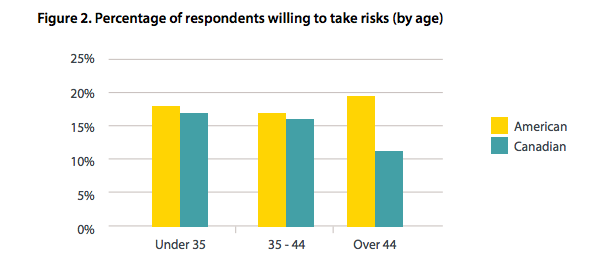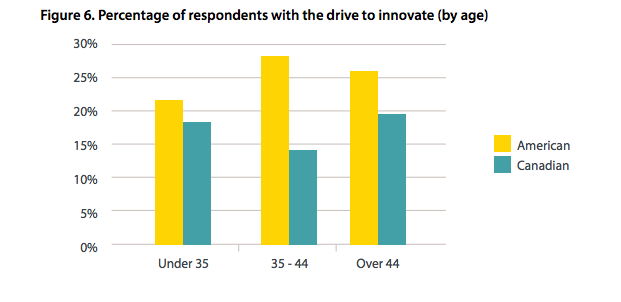A new study suggesting that Canadian attitudes towards innovation trail those of Americans will “add to national angst,” according to the authors.
The study, which was conducted by the University of Toronto Impact Centre, said that Canada not only trails the US in terms of innovation performance; it also trails in attitudes towards innovation. The researchers surveyed 1,000 knowledge workers for the study.
The Centre conducted the study as they said that innovations are a precursor to a successful economy — and of course, attitude sets the tone for how we approach innovation.
The study looked at five dimensions of innovative attitudes, including a willingness to take risks, perseverance, independence, financial drive, and a drive to innovate. The study found that while fewer older Canadians (over 44 years of age) are willing to take risks compared to their American counterparts, almost as many young Canadians (under 35) are risk takers.

The study also noted that we lack grit and perseverance expected of entrepreneurs — Americans were less likely to report getting discouraged or giving up compared to Canadians — and Americans outnumbered Canadians by 31 percent when asked if they frequently think of new ideas for processes and products.

The bright side, researchers noted, was that there was still hope for the future of innovation. “In many of the dimensions of innovation, the percentage of Canadian respondents under the age of 35 approaches—and in one case exceeds— the percentage of Americans with positive attitudes to innovation,” the study said. “Americans with strongly positive attitudes exceed Canadians in this age group by only 20 percent.”
“The Impact Centre is undertaking research to understand why we lag much of the developed world in our capacity to innovate,” said study author and Impact Centre Senior Fellow Charles Plant. “Most studies only say that we are bad at innovating, and include general recommendations about what we can do about it,” said Plant. “They don’t say why we fail at innovation and how to fix the problem.”
The full study can be found here.


